Mulyana is an Indonesian artist known for his colourful crocheted coral worlds of fun characters inspired by the television shows of his youth. His artwork has become a proliferating entity, continually growing and evolving into an interconnected world of beings.
He is driven by his love of crocheted handiwork, combined with the meticulous requirements of crochet pattern design. He uses his work to explore religion, to achieve happiness through creativity, and as a way to connect with community.
Mulyana was educated at UPI (Indonesian Education University), Bandung and at Darussalam Islamic Studies Institute (ISID) Gontor, Ponorogo. His commissioned works have featured in the window displays of Hermès stores in Seoul and Singapore. He participated in artist residencies at Project 11 in Melbourne, Australia and at Nafas Residency, Yogyakarta, Indonesia and has exhibited throughout South East Asia, Australia and the US.
In this interview Mulyana shares how he uses his work to connect with others and tell stories. Discover more about the benefits and joys of crochet as a textile medium and find out how Mulyana creates his large and exciting installations using this traditional technique.
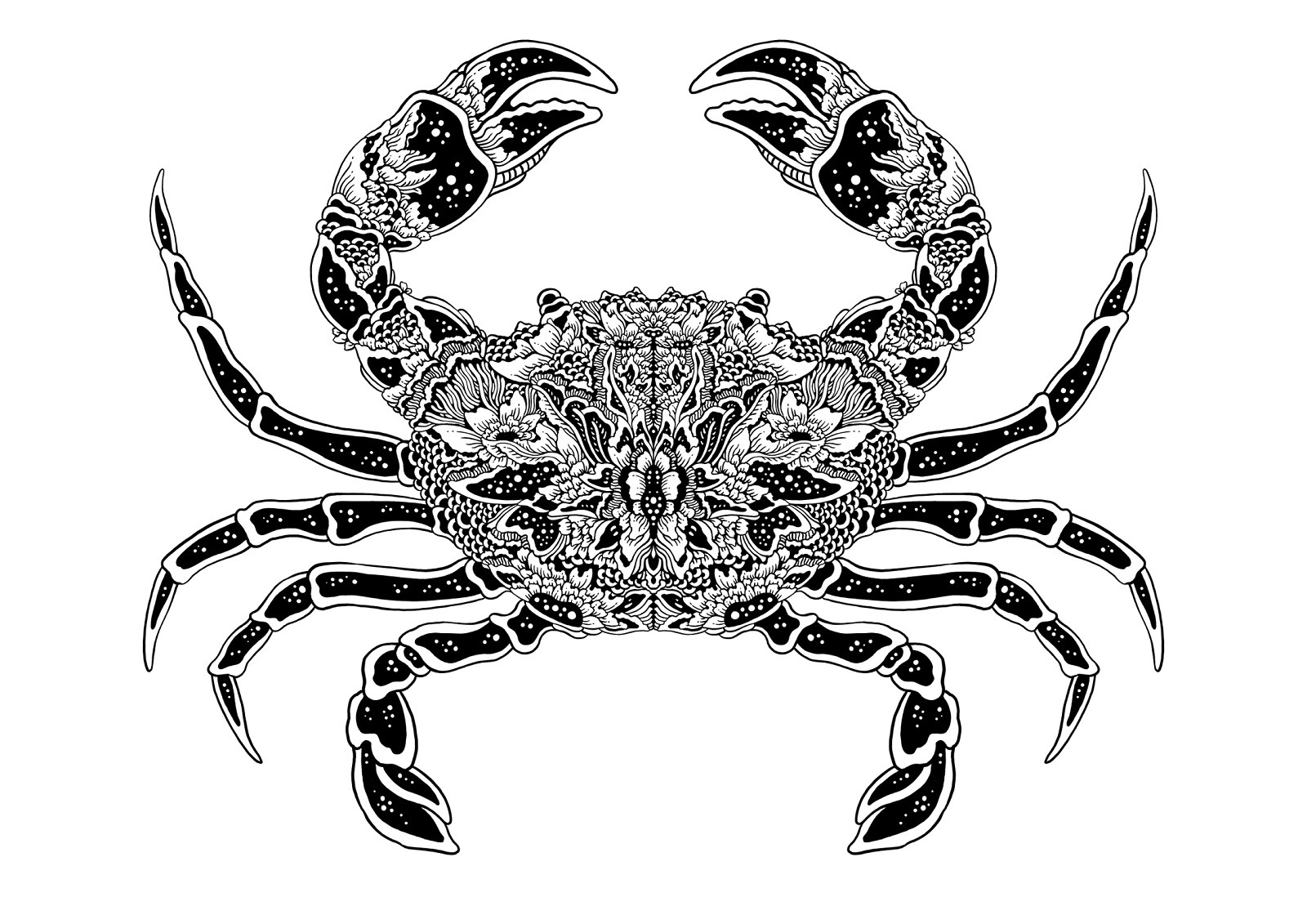
Batik and design
TextileArtist.org: What initially attracted you to textiles as a medium? How was your imagination captured?
Mulyana: I’ve always liked wearing Batik textiles since I was very young, because of the formality associated with it, and the variety of motifs. Batik is part of our cultural heritage. It is our national textile and a signature look for Indonesians. The Indonesian government made it mandatory for office workers and students to wear Batik on Fridays. This has created the opportunity to wear Batik more often, when in the past it was mainly worn for ceremonial or official occasions. I feel very special whenever I wear Batik. The fabric has many motifs, and its tactile nature is what attracted me to learn about and explore textiles.
My initial personal exploration into pattern design was through making vignettes, small decorative illustrations, which allowed me to play with forms and shapes. I still enjoy designing tendrils and ringlets as a break from my crocheting routines. My interest in textiles made me want to study further so I took an Art Education course at University, which allowed me to study textiles, techniques, textile history and various textile applications.
When I took up crocheting in 2006, I was interested in the combination of science and creativity. To create a pattern we must calculate meticulously but creativity also is needed to develop a form, combine colours and evolve a composition. Crocheting is a very mobile medium, for it is pliable, concise and clean.
The challenge is to capture a story in an object. I find that my imagination triggers unconsciously when I work with my hands, crocheting while chatting, watching films, or reading online news. I choose to create artwork installations as a story-telling medium, to give the public a different perspective.
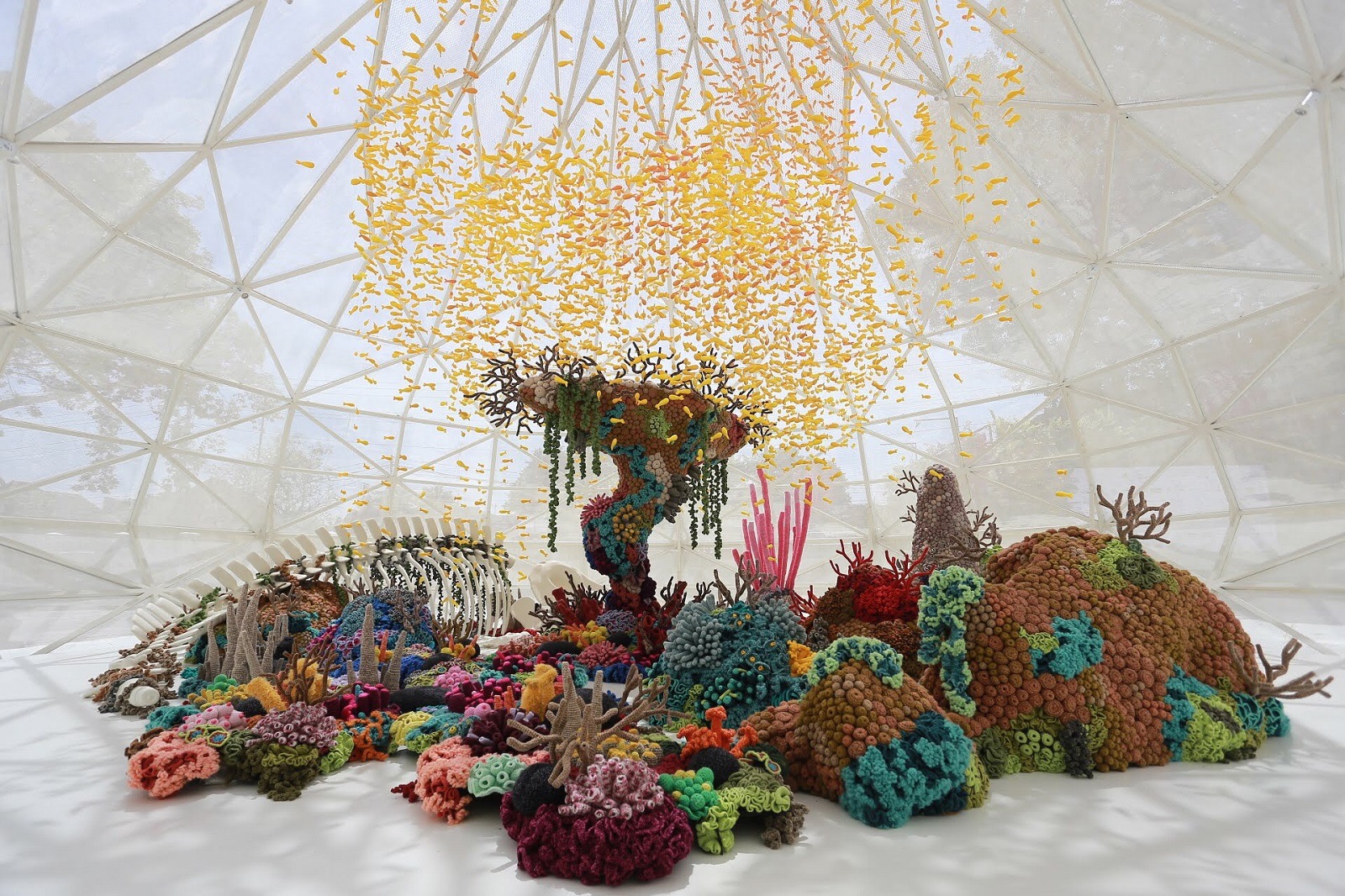
What or who were your early influences and how has your life/upbringing influenced your work?
My childhood experiences play a big part in my art practice. Watching children’s programs like Si Unyil, an Indonesian puppet TV series from the 1980s, Japanese manga series like Doraemon, Sailor Moon, Ranma ½ and Saint Saiya, or the Japanese tokusatsu series Kamen Rider Black. These made me wonder about the programme production and character development.
Each series has protagonists and antagonists, the ugly and the beautiful, and so on. The world is captivated by the dualism of good and bad. There would be no balance without it. This idea is still fascinating for me today, in seeking balance.
Having a religion is a decision that I made and live by. The concept of Divinity is my benchmark, a place to hold on and find balance. We must face up to ‘the reality’ and ‘the unseen’; reality being the neural processing of what the senses receive and the unseen being the processing of feelings. God is my main influencer. His creation is always new, growing and developing in time. For me, becoming an artist is an act of worship and a call to spread His teachings, share my knowledge, and at the same time release anxiety and communicate with other human beings.
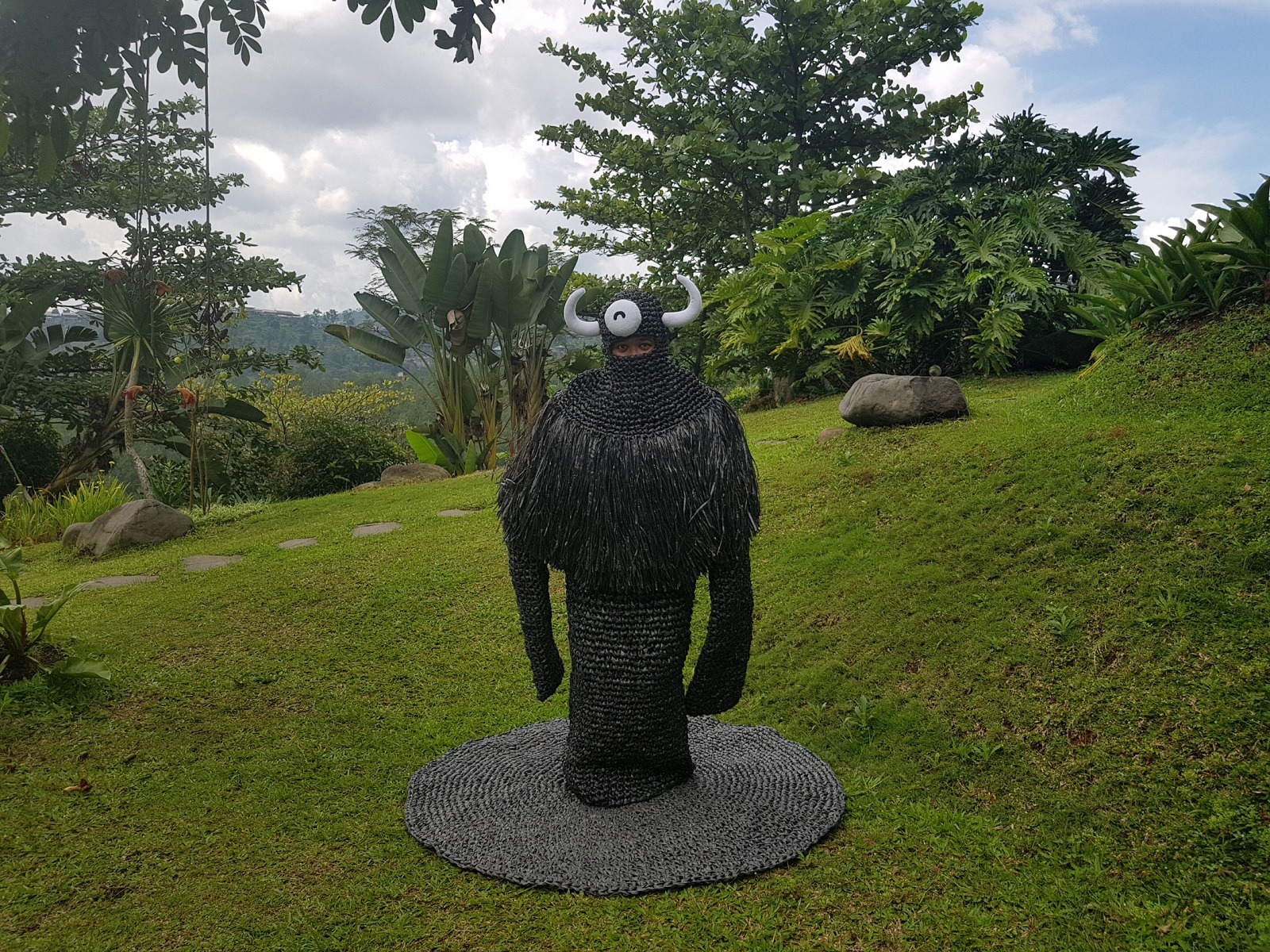
What was your route to becoming an artist?
I have been interested in artistic activities since I was a child. In Elementary School I took up traditional dancing, but my dainty moves got me bullied and called out as too ‘girlish’, so I stopped. At the time, I made drawings to channel my anxiety. I found drawing very calming and it is something I still do today. Making art makes me calm and peaceful. It has helped me through difficult times in making friends and communicating with other people.
In my opinion, art is a ‘feeling game’, a place to share imagination. Options and perspectives are popping up all the time when we connect through. Art always made me happy, so I became an artist.
I’ve seen wonderful things in the art scene. I’ve learned a lot from my art friends and the various communities I visit and work with. I read that beauty is something that makes people happy, and that art is a means to make beauty.
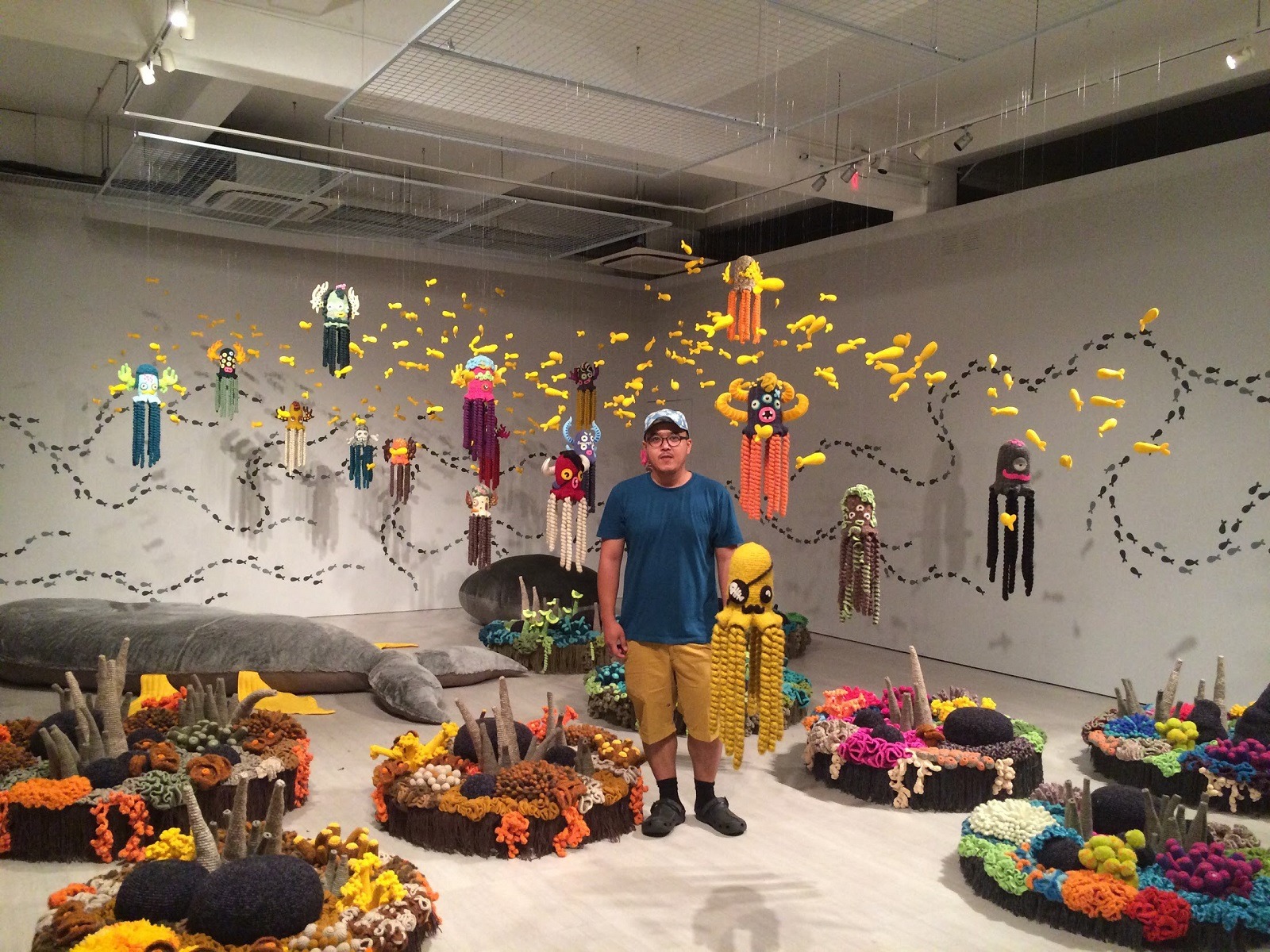
Crocheted imaginings
Tell us about your process from conception to creation
My creation process is quite straightforward. First I begin to think of a form while crocheting. My artwork is made of modular pieces and it is a growing and evolving artwork. To make an installation, the modules are combined according to the available space. My work is continually growing as it develops, with a limitless end point. And there’s always the possibility that another artist will take over and keep the artwork ‘alive’!
I call my work ‘Mogus World’. A new mogus will be born, and the coral islands become a habitat where the mogus lives will keep on growing and expanding. New forms of mogus friends will keep on coming, or perhaps mutate into something prompted by an exhibition or by the story I want to tell.
For large commission works I make sketches and patterns first, and then for the production process I get help from the women attending my workshops or local crochet groups.
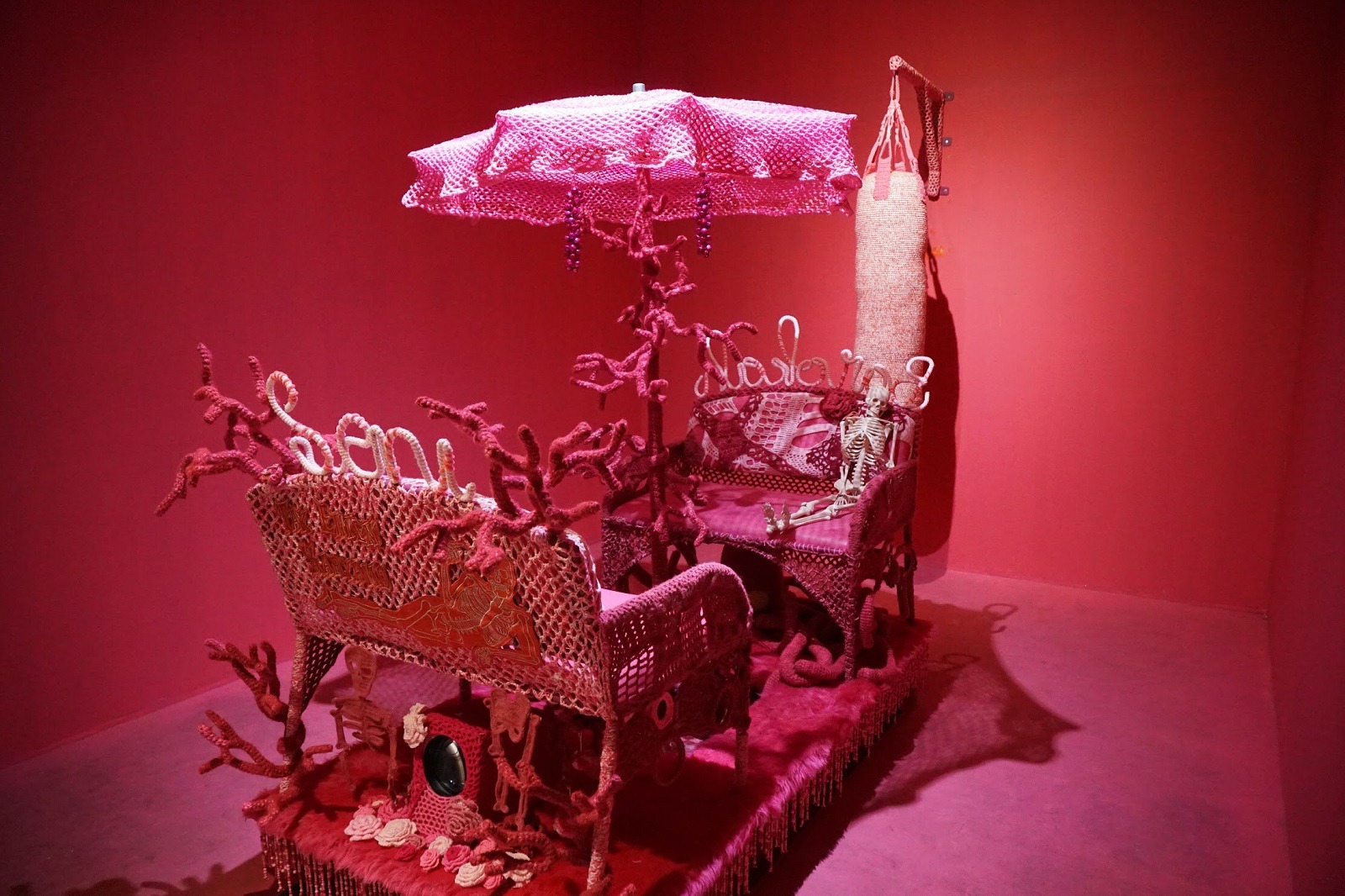
Tell us a bit about your chosen techniques and how you use them
I use crochet as it has power and flexibility. It is very good for making shapes. The texture is flexible; it can be as tight and sturdy as needed, depending on how the crocheter uses the hook and materials.
Knitting and yubiyami finger-knitting are more suitable for wearable products, so I use them for specific modules and stitch them together.
I prefer crocheting as it has a lot of technical challenges such as making patterns that can be duplicated. I have to calculate and make a pattern formula, which need meticulous skill and patience. Pattern-making is still perceived as female skill here, and I have to overcome this stigma.
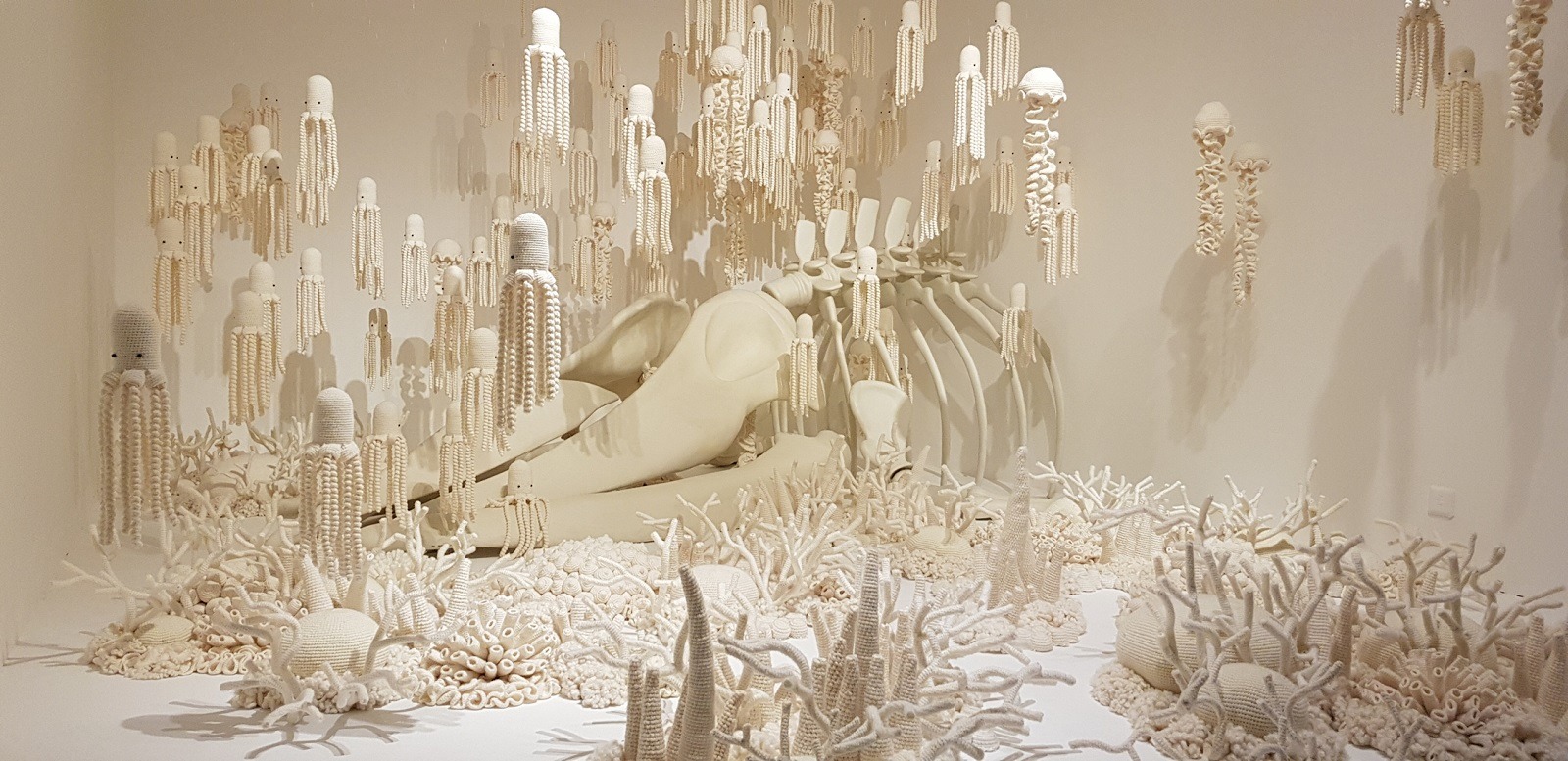
What currently inspires you?
The universe as God’s creation inspires me. My work starts as a story which I build and develop while discussing an idea with friends, family, and other people in the communities that I visit.
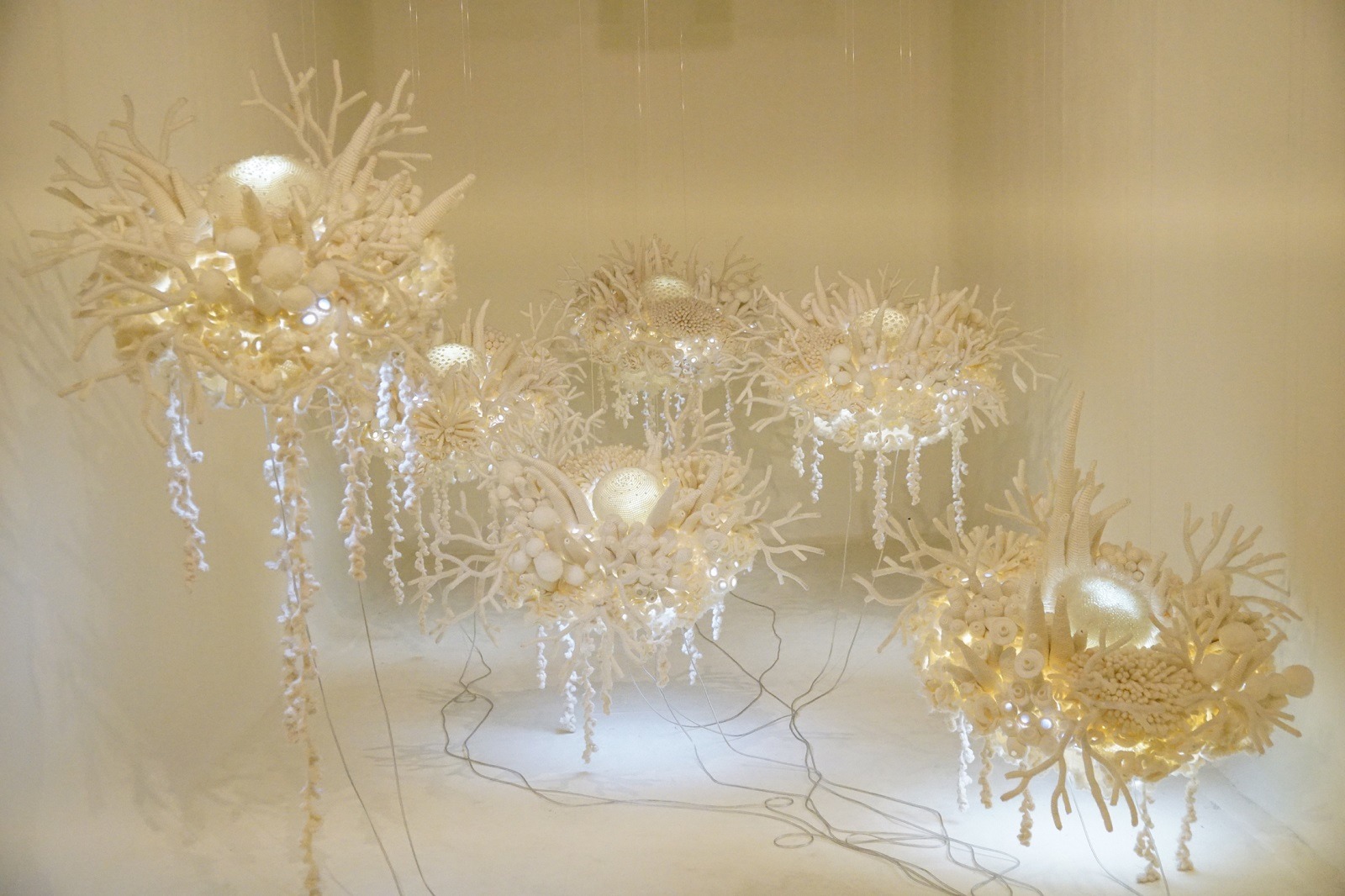
Challenging empty prayers
Tell us about a piece of your work that holds particularly fond memories and why?
‘Silent Prayers’ is an installation of bleached coral islands with lights dimming on a timer. This piece is about a collection of memories and thoughts about the power of the medium, the universe, prayer and death.
Prayer is a magical word, a repeated action made by one who believes in the power beyond. For those who believe in God, prayer is a hope and a gratitude for the blessings in life.
In real life, prayer can be a suggestion preceding meaningful action. With ‘Silent Prayers’ humans pray for sustainability, but then do the opposite with their destructive actions. Prayer becomes a useless chant. I wanted to convey a message that prayers need a follow up action.
The theme of death is symbolised by the bleached coral islands and the suddenness of the lights turning off. It is a reprimand for humanity. Once the lights are off, there’s no more hope and no more prayers.
In making a monochrome piece, I faced challenges. The yarn plays tricks on the eyesight while you are crocheting. The ladies who assisted me had to work hard to closely follow the details in the specified pattern formula.
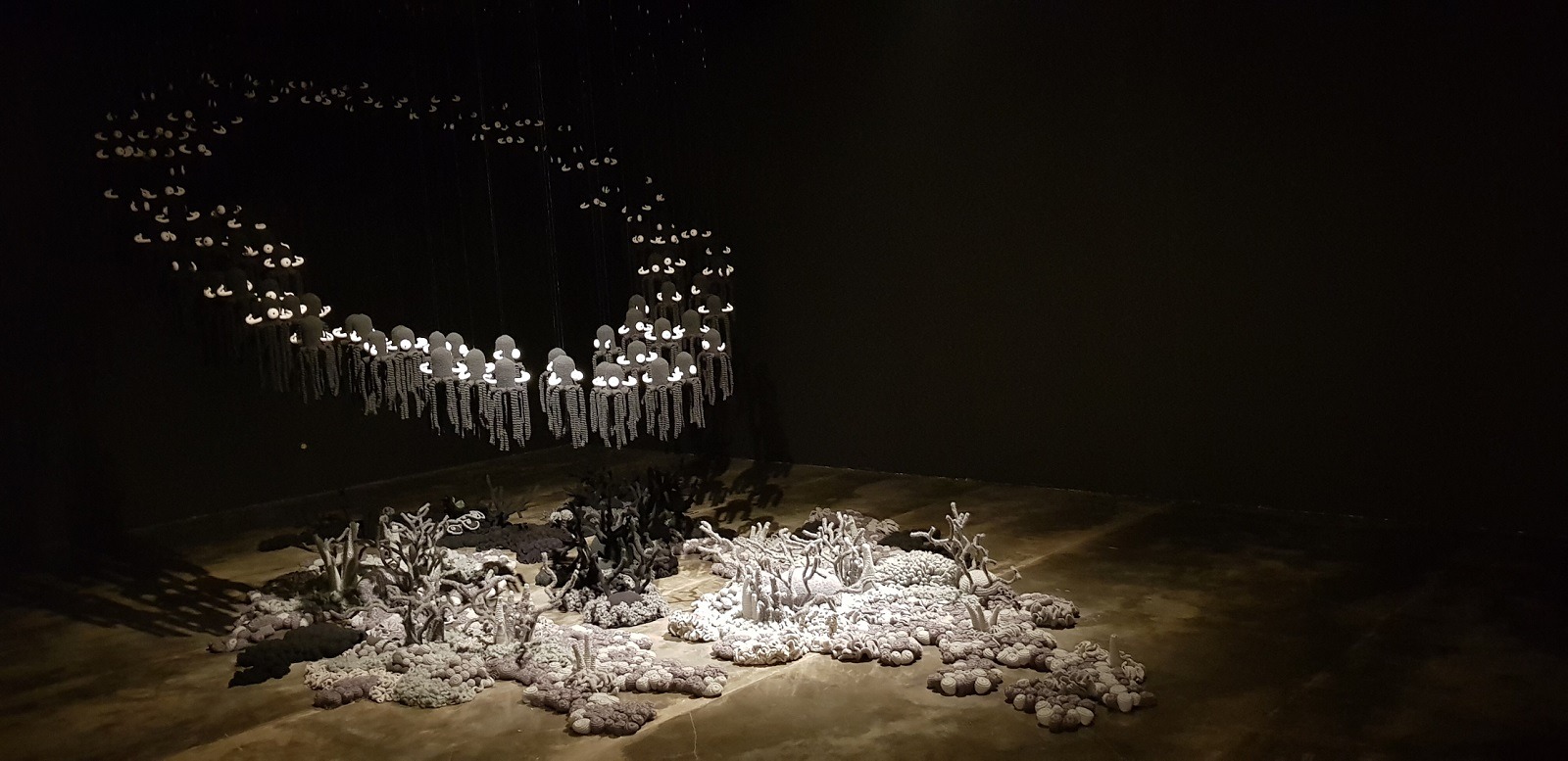
How has your work developed since you began and how do you see it evolving in the future?
My work has evolved as I’ve aged, along with my growing knowledge of stories and the experience of working with my hands every day.
I have become more integrated in the community. I think about others more and I see beyond the personal and individual aspects of life. I consider the social effects and the growing power when artworks are made within a community. Art is not merely about how we express and pursue our personal happiness, but a way of sharing possibilities and sensitivity to others. I see limitless possibilities in exploring this textile medium, given the opportunity, time and funds. In the future, I will always do my best to create meaningful artwork.
For more information visit www.mulyana.info
Are you a crochet fan? If you’ve enjoyed this article, share it with your friends using the buttons below.
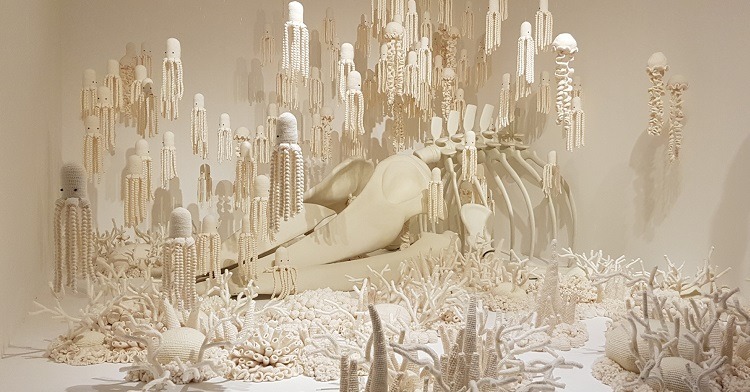
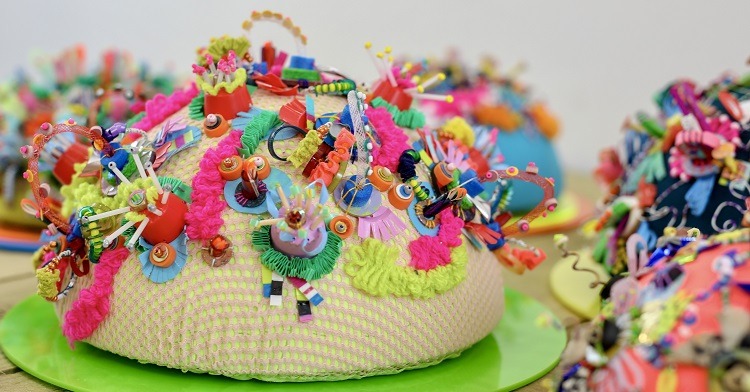
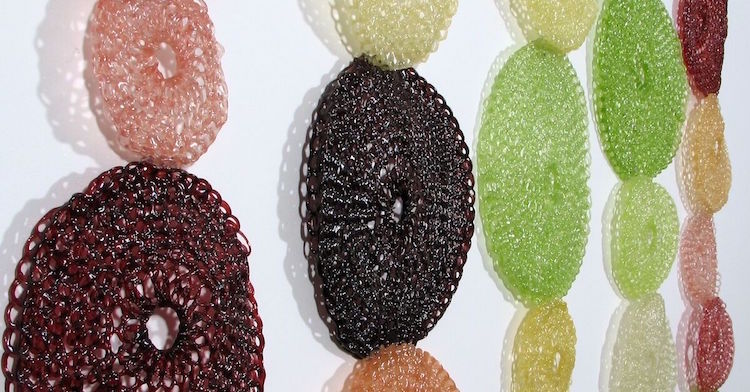
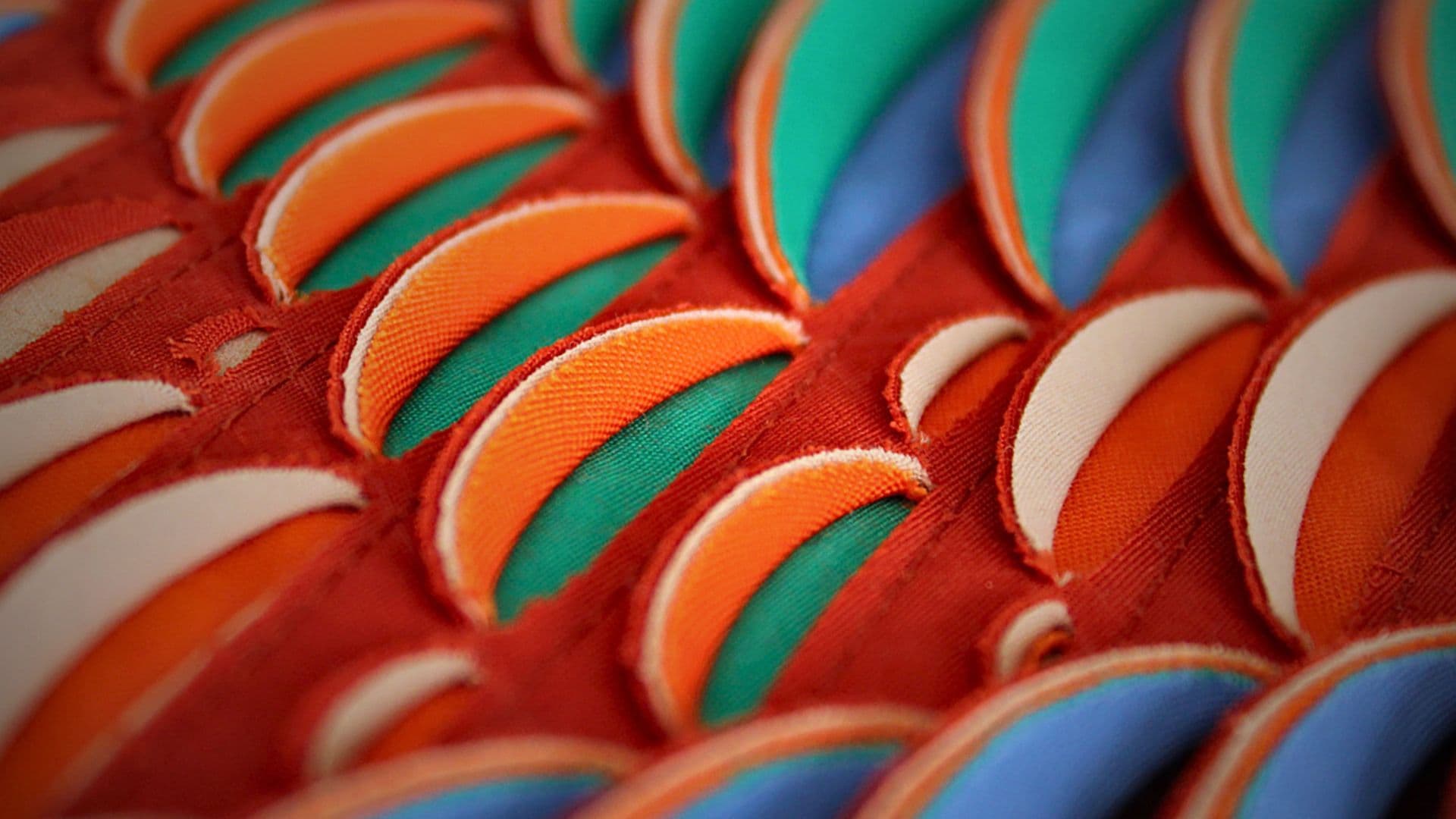
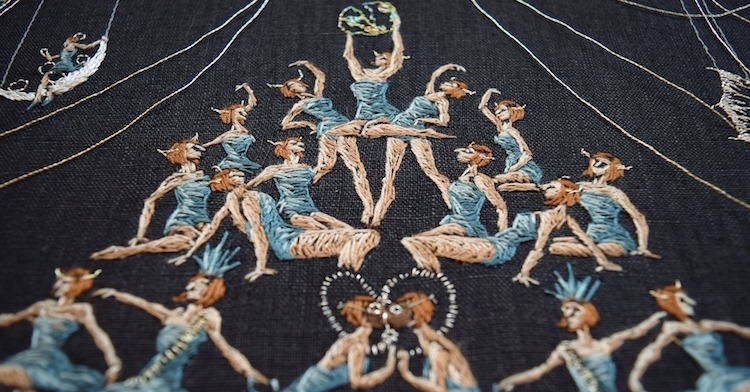

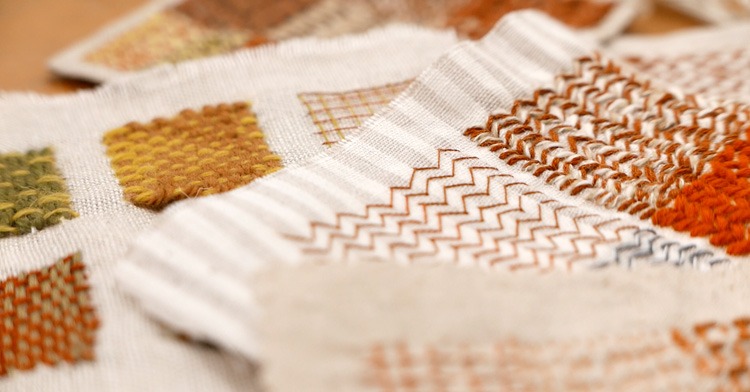
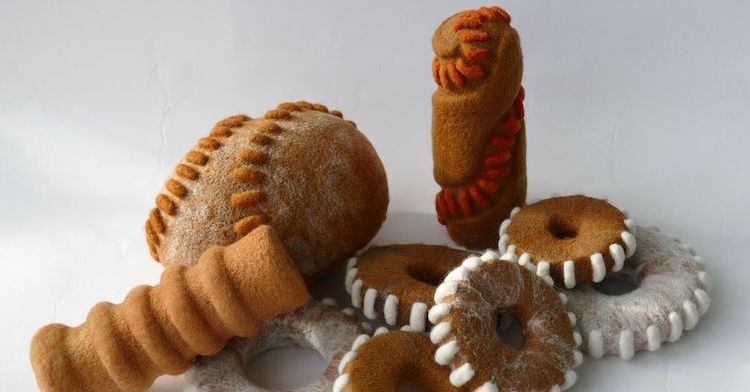
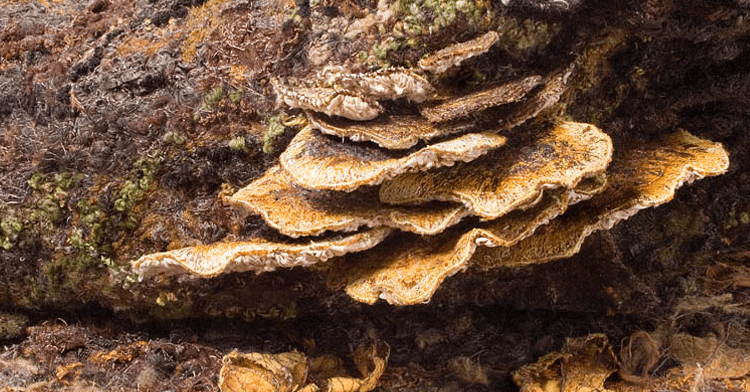
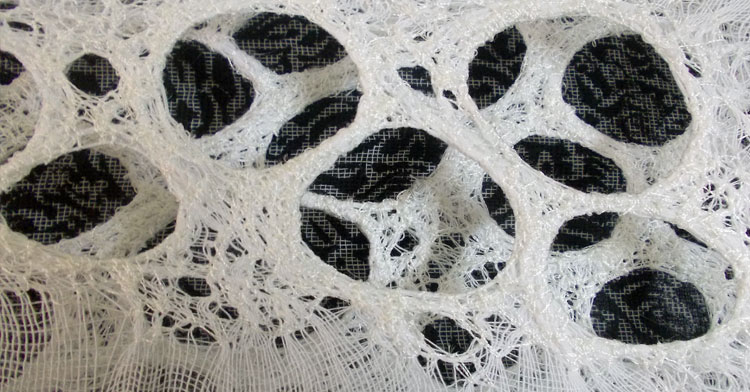
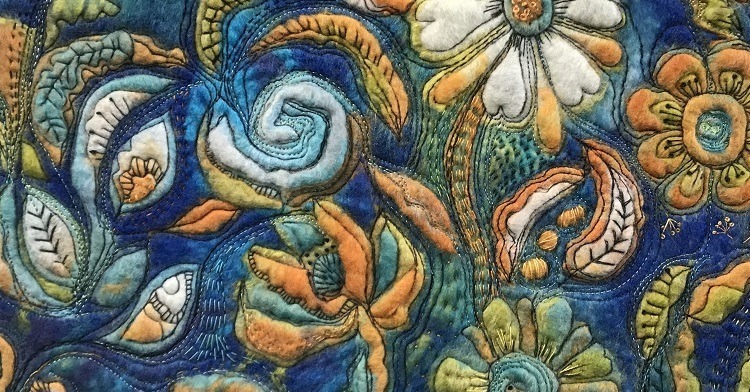
2 comments
Jana Jopson
Amazing work. Beauty and wonder. That his creations are guided by his inner spiritual life means there’s a heart thread throughout.
Patty Pittala
Silent Prayers- wow, that really touched me! I love when a piece of artwork can really make a personal impact on you.
Beautiful work!
Patty Pittala